#kijiro nambu
Photo

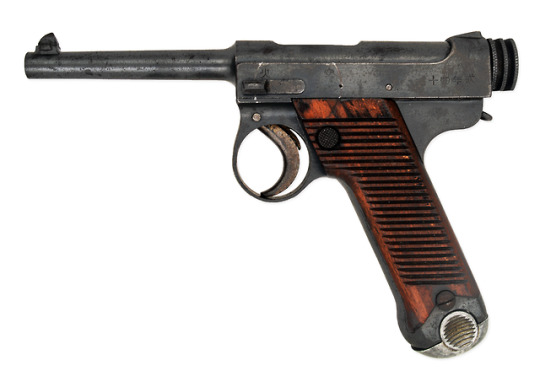


The Japanese Nambu Pistol Part III --- The Type 14
In case you missed Part I, Part II
While the Nambu pistol was a successful design mechanically, being a reliable weapon (when maintained properly) well balanced, and very accurate, it did not gain much popularity with the military because of it’s high price tag. Recall I have mentioned before that Japanese officers were required to purchase their own sidearms, and the Nambu was simply drowned out by competition from cheap foreign imports.
In 1925 Kijiro Nambu set upon a redesign of his pistol with the purpose of simplifying it to make it cheaper and easier to mass produce. First, the heavily checkered grip of the Type A was replaced with a simple grip with lines cut horizontally. The grip safety of the Type A gave way to a manual safety located on the left hand side of the pistol. The adjustable rear sights of the Type A was replaced with a fixed sight, as making 500 yards shots with a pistol was just wishful thinking. The rear cocking knob was redesigned and simplified to make it easier to cock the pistol. Finally the finishing and bluing of the Type 14 used much cheaper materials. Below you can see the differences between the Type 2 and Type 14.
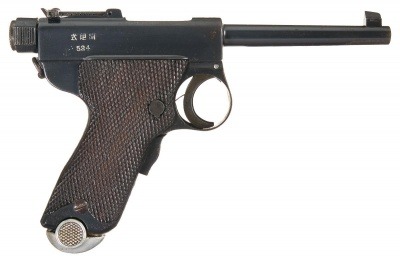
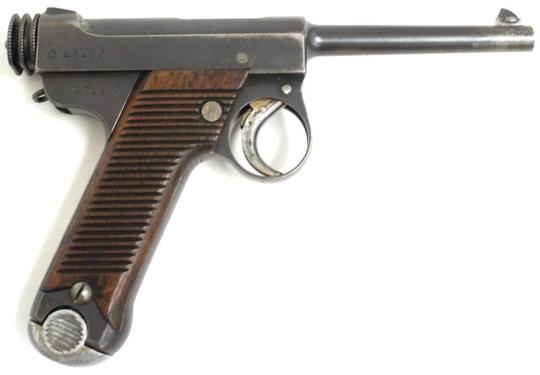
Kijiro Nambu found success with the Type 14 when in 1927 the Japanese Army adopted it as the standard sidearm for all non-commissioned officers. Furthermore, since the new Type 14 was much more cheaper, it was now competitive with other pistols price wise and many Japanese officers chose to purchase it instead of foreign imports. One further improvement would be made to the Type 14. One big complaint with the Type A Grandpa Nambu was that it’s trigger guard was too small. The trigger guard was enlarged slightly with the Papa Nambu, but again it’s size was a major complaint among users. After use by Japanese soldiers in Manchuria who often had to war gloves to keep their hands warm, the trigger guard would be enlarged further so that it noticeably bulged outwards.

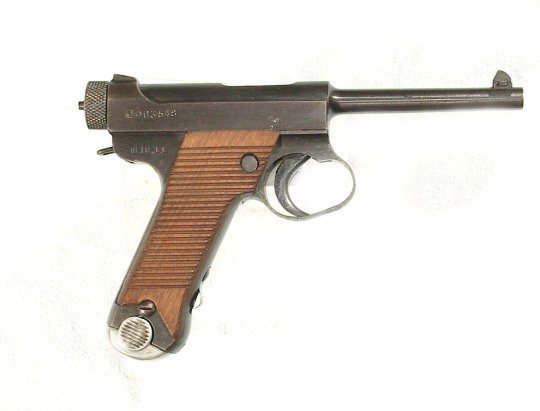
The Type 14 would be used by the Japanese Army and Navy in the Second Sino Japanese War in the 1930′s and World War II in the 1940′s. As World War II progressed and Japan suffered dire resource shortages, the quality of the Type 14 decreased, although it’s functionality remained intact. During World War II, the Type 14 became a favorite trophy pistol of Allied serviceman, much like the German Luger in Europe. Around 400,000 were manufactured between 1927 and 1945.
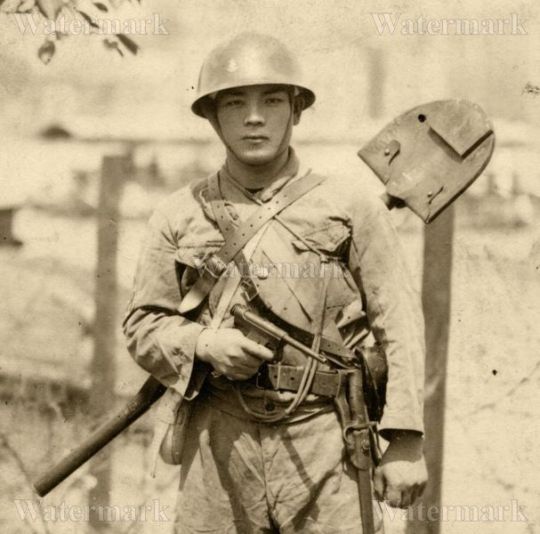
#guns#firearms#history#antiques#pistols#gunblr#nambu pistol#type 14 pistol#world war ii#wwii#second sino japanese war#kijiro nambu
339 notes
·
View notes
Photo

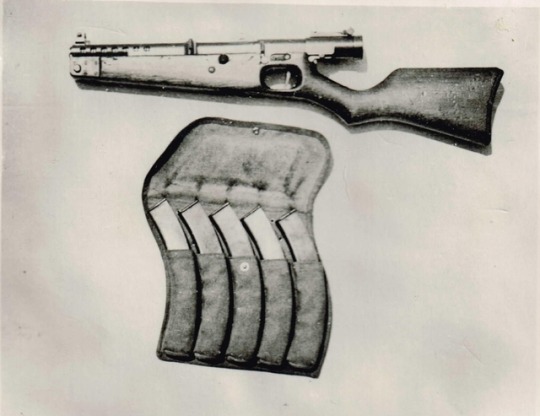
Japanese Type II Model B
Like many of the major powers at the beginning of the Second World War the Japanese had shown little interest in submachine guns. Purchasing a limited number of Bergmann MP28/IIs and MP34s for testing and limited issue during the late 1930s. Alongside these foreign designs some indigenous development also took place with Kijiro Nambu designing several interesting submachine guns.
There is relatively little information available about Nambu’s submachine guns with even designations muddled. Author William Easterly notes that the model featured above was described as the Type II Model B. Developed in 1934, the earlier Type I chambered the 8mm Nambu pistol cartridge and fed from a 50 round curved magazine. The pistol grip acted as a magazine housing, a feature predating both the Sa vz. 23 and the Uzi. Other than the weapon’s pistol grip it followed conventional designs from Bergmann and SIG using a tube receiver and a blowback action.
The Type II Model B, shown above, differs significantly from the earlier Nambu submachine gun. It has full wooden furniture with a cutout for a trigger guard, and a semi pistol grip stock. The magazine loads just ahead of the trigger guard and the Model B feeds from 30, rather than 50, round magazines. The design retains the tube receiver and used a telescoping recoil spring and a pneumatic buffer to slow the weapon’s rate of fire.
The Japanese Army were allegedly uninterested in the new weapon, however, it has been suggested that the Navy purchased a small number for testing. Samples were certainly produced, probably by Nambu’s company, Nambu-Ju Seizosho K.K. One of these samples was found at the Japanese headquarters in Singapore at the end of the war (see image #2).
A British technical report produced by the Chief Inspector of Small Arms in Bengal, India describes the standard of the captured Model B’s workmanship as being “above that normally found in Japanese small arms.” The report describes the Model B’s pneumatic rate of fire reducer as having “five holes of different sizes in the cap of the buffer housing.” The rate of fire could be varied by the rate at which the air was pushed out of the valve in the buffer. It is unknown on which gas setting the weapon was tested on but a rate of 820 rounds per minute was recorded.
The weapon had a safety on the left side of the receiver which locked the trigger.Overall it weighed 6.25lbs, was 26 inches in overall length and had a tangent sight, graduated out to an optimistic 600m. Some sources suggest that less than fifty Type II Model B’s were produced with several now residing in reference collections.
Sources:
C.I.S.A, India, Technical Report No. J-28 on 8mm Unknown Type Japanese Machine Carbine, via ForgottenWeapons, (source)
Many thanks to Peter Hokana for kindly allowing the use of his photograph
Nambu Machine Pistols, W. Easterly, (source)
If you enjoy the content please consider supporting Historical Firearms through Patreon!
#history#military history#firearms history#ww2#japanese submachine gun#nambu#prototype#firearms design#firearms development#gunblr#weapons#prototypes#firearms#guns#wwii#world war two#kijiro nambu
150 notes
·
View notes
Photo

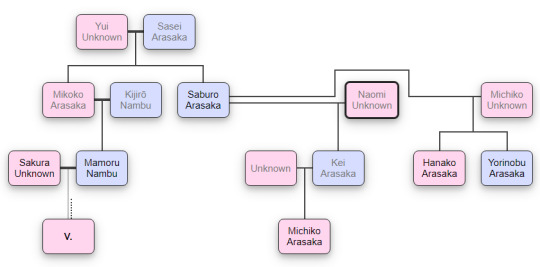
V’s family tree
Nambu Kijiro was a talented weapon manufacturer along Saburo a long time ago. They knew one another, and Saburo’s sister Mikoko even married him. Nambu’s company soon met difficulties and Saburo offered to buy his factory and let him join Arasaka. And with little choice and pleading of his wife, he accepted. Possibly the first takeover of Arasaka.
Mamoru, Kijiro’s son always felt like he deserved more than what he got. Dropping the family connection to Saburo in near any conversation and trying to raise in ranks. Being stationed in Night City and having many people under him was never enough. He strived for always more power, and so everyone in his reach became nothing more than a tool to achieve that. His adopted daughter, his wife, and anyone else.
V had no contact to the main branch until after the heist.
2 notes
·
View notes
Text
New 8x22mm Nambu Ammo Headed to Market
An estimated 475,000 Japanese Type 14 and Type 94 Nambu pistols were made, with many coming back to the U.S. after WWII as war trophies. Steinel Ammo is now making new cartridges for these relics. (Photos: Chris Eger/Guns.com- pistol, Steinel- ammo)
Ohio-based Steinel Ammunition announced this week they are making new factory ammo for Japanese Nambu pistols. The rimless, bottleneck 8x22mm cartridge was developed in 1904 by Kijiro Nambu, a firearms designer often referred to as the “Japanese John Browning.”
Used in Nambu’s Type 14 and Type 94 pistols as well as his Type 100 submachine gun in World War II, the low-powered cartridge had a reputation in military service as being on the anemic side, especially when compared to .45 ACP rounds. While no guns chambered for the round have been made since 1945, officials with Steinel feel there is a desire among potentially thousands of Nambu enthusiasts in the States for the round.
“Unless you are adept at loading your own ammunition, we find many classic firearms owners are just keeping these unique historical pieces in the safe,” said Andy Steinel, president of Steinel Ammunition. “So many Marines who served in the Pacific theater during World War II either captured or picked up one of these Type 14 or 94 Nambu pistols. They are incredibly fun to shoot, offer light recoil and their unique design is still copied by firearm designers today.”
Steinel noted that no less a firearms designer than Bill Ruger is believed to have used the Nambu handgun series as inspiration for his own Standard .22LR pistol in 1949.
Using an 83-grain full metal jacketed bullet, Steinel is marketing the new production Nambu cartridges in 25-round boxes for $26.99.
The post New 8x22mm Nambu Ammo Headed to Market appeared first on Guns.com.
from Guns.com http://bit.ly/2VGGzx1
from Blogger http://bit.ly/2M52GOh
0 notes
Photo

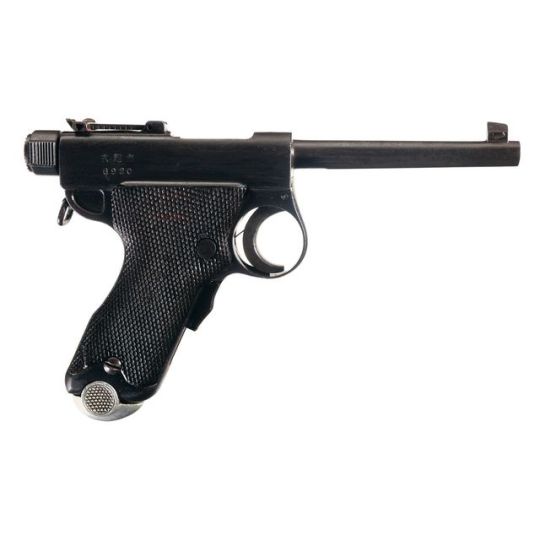
The Japanese Nambu Part I ---- The Type A “Grandpa” and “Papa” Nambu
In 1893 Japan adopted its first domestically designed and produced sidearm, the Type 26 revolver. While it was a simple and reliable revolver, times and technology were changing, and soon semi automatics would become a popular option as a military sidearm. Sometime around the turn of the century an arms designer working for Tokyo Arsenal named Kijiro Nambu was ordered to design and develop a modern semi automatic pistol for Japan. The son of a Samurai, Kijiro Nambu was Japan’s most prolific firearms designer, a contemporary of gun designers such as Paul Mauser and John Browning. Unlike Mauser and Browning, however, some of Nambu’s designs were very problematic, overcomplicated, and just plain weird. While Nambu created many good designs, his bad designs give him a bad reputation among military and arms historians.
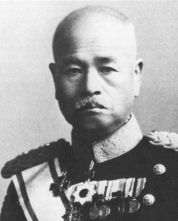
Perhaps Nambu’s most successful designs were his semi automatic pistols, which would become the standard sidearm of the Japanese military from the 1920′s up until the end of World War II.
Nambu completed his pistol design in 1902. What he created was a semi automatic pistol that outwardly looked similar to the German Luger, but internally was similar to the German Mauser C96 Broomhandle pistol. Utilizing a recoil operated locked breech mechanism, meaning the inertia generated from the recoil drove the breechblock backwards, while the locking mechanism slowed the momentum of the breechblock so it didn’t create excessive recoil or damage the mechanism. A spring would then drive the mechanism back into place. During the process, the empty cartridge casing would be ejected, and a new cartridge stripped from its 8 round magazine.
The Nambu pistol fired an 8x22mm cartridge, also designed by Nambu, which has similar ballistics and stopping power of the .380 ACP cartridge. The pistol featured a grip safety, meaning that the pistol would not fire unless the handle was gripped by the hand.

The magazine release was located on the left hand side of the pistol. The magazine did not freely drop from the pistol, but had to be extracted by hand. The pistol featured a rear tangent sight which can be adjusted from 100 to 500 meters. Call it wishful thinking, but I doubt many Japanese officers were making 500 meter shots with their Nambus.
The new pistol was called the Nambu Pistol Type A. Two variants were produced, the “Grandpa” Nambu which was the first production model, and the “Papa” Nambu which was an improved model. The Grandpa Nambu began production in 1906 by the Tokyo Arsenal and Tokyo Gas and Electric company. Only 2,400 were produced before production ceased and the modified Papa Nambu was introduced. One major complaint with the Grandpa Nambu was that the trigger guard was too small. Thus the trigger guard of the Papa Nambu was enlarged slightly. The Grandpa Nambu featured a wooden grip on the bottom of the magazine, while the Papa Nambu featured an aluminum grip. Finally the Grandpa Nambu featured a welded lanyard ring, while on the Papa Nambu the lanyard was a separate piece . 7,100 Papa Nambu pistols were produced until production of the Type A ceased entirely in 1923.

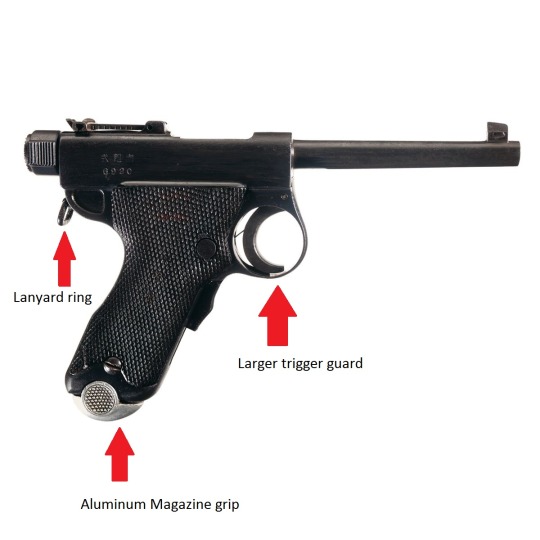
The Nambu Type A pistol was a fairly well designed pistol for the early 20th century. Perhaps it’s best trait is that it is a very well balanced and accurate pistol. However it did have some problems. First the 8mm Nambu cartridge was quite anemic compared to competitors such as the 9mm Luger, .45 ACP, 7.62x25mm Tokarev, and 7.63x25mm Mauser. However it must be noted that at the time there were many military pistols common in Europe which used small caliber, low pressure cartridges such as .32 ACP. Second, it had very weak firing pin springs which wore out quickly, causing malfunctions and failure to fire. Finally the Nambu had a reputation for being vulnerable to mud, moisture, dust, sand, and extreme temperatures. Considering the Japanese Imperial Army would operated in places such as the frigid Mongolian steppes, hot and humid jungles, or sandy pacific islands, this flaw could be quite problematic. However this reputation is unfair since this is an issue common to all semi automatic pistols, even today. Most of the reliability problems were not necessarily the blame of the pistol or Kijiro Nambu, but from inadequate cleaning and maintenance on the part of Japanese officers who carried them.
The Japanese Army chose not to adopt the pistol, not because of design flaws or poor performance, the pistol actually performed well in military testing trials. It’s biggest downside was it was very expensive. Until the end of World War II, Japanese officers were required to purchase their own sidearms. Most chose not to purchase the Type A because there were many foreign imports from Europe which were cheaper but just as good or better than the Nambu in terms of performance. In addition, pistols were not really important to the Japanese Army, with many officers prizing a their swords over their firearms. The only military contract for the pistol was a limited production run for the Japanese Navy and military contracts from Thailand. Among those produced for Thailand was a rare model that featured a detachable buttstock which doubled as a holster.
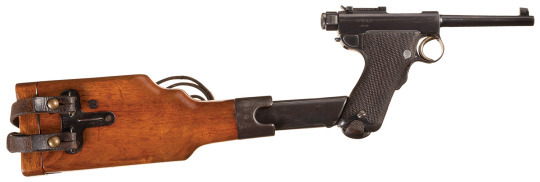

Regardless of it’s lack of popularity, the Type A Nambu saw some limited service with the Japanese Army during World War I.
400 notes
·
View notes
Photo

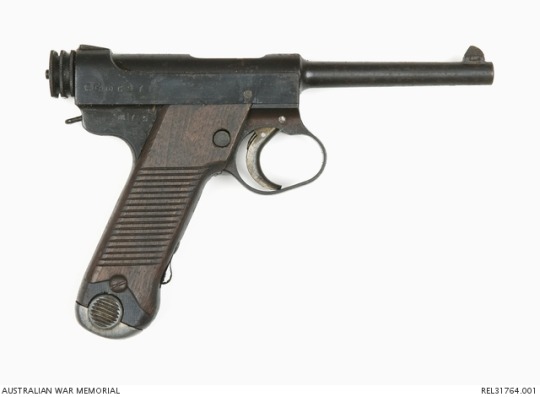
In Action: Nambu Type 14
Two Australian soldiers of the ‘A’ Company, 2/27th Australian Infantry Battalion examine what appears to be a Japanese Nambu Type 14 pistol, captured in New Guinea during the Battle of John's Knoll–Trevor's Ridge.
The Battle of John's Knoll–Trevor's Ridge was a small engagement that saw the 2/27th take and hold a strategic ridgeline defeating a counterattack by a battalion of the Japanese 78th Infantry Regiment. The Australians suffered seven killed and 28 wounded, while Japanese losses totalled 200 killed.
A revision of Kijiro Nambu’s earlier Type A design the Type 14 was introduced in 1925, and adopted by the Japanese in 1927. Estimates differ but suggest between 200,000 and 400,000 Type 14s were made before end of the war. Chambering the 8×22mm Nambu round the pistol fed from an 8-round magazine and used a recoil operated, locked breech action. Also seen in the photograph is an Owen Submachine Gun and an SMLE.
Sources:
Images: 1 2
If you enjoy the content please consider supporting Historical Firearms through Patreon!
#History#Military History#Firearms History#Nambu#In Action#Nambu Type 14#Pistol#gunblr#Kijiro Nambu#Owen Gun#SMLE#Australian Army#Battle of John's Knoll–Trevor's Ridge#Japanese 78th Infantry Regiment#2/27th Australian Infantry Battalion#World War Two#Second World War#Far Eastern Theatre#WW2#WWII
88 notes
·
View notes
Photo


The Japanese Nambu Pistol finale --- The Type 94, Nambu’s Folly
In case you missed: Part I, Part II, Part III
In the very first post of this series I mentioned how Kijiro Nambu has a bad reputation as a weapons designer. While he made many great designs, he also made some exceedingly terrible designs which spoil his reputation and legacy. This is one of those designs.
The Type 94 was designed by Kijiro Nambu in 1929, shortly after his retirement and founding of the Nambu Rifle Manufacturing company. The purpose of the Type 94 was a lighter more compact alternative to the Type 14 to be specially issued to tank crews, pilots, and aircraft crews. In this regard it was successful, the Type 94 weighing 1lb 11oz and having an over length of 7.36 inches while the Type 14 weighed around 2 lbs and had a length of 9 inches. The Type 94 was made shorter, lighter, thinner, and with a much more compact frame. In order to make the Type 94 smaller, the magazine capacity had to be reduced to 6 rounds, whereas the Type 14 had eight. In addition the Type 94 used rubber grips instead of wood grips as a weight saving measure, although when Japan faced shortages of rubber during World War II, wooden grips were substituted. It still used the common 8x22mm Nambu cartridge.
The Type 94 was not as well balanced and accurate as the Type 14, but was a functional pistol, and if maintained properly was reliable. As World War II progressed the quality of the Type 94 decreased due to Japan’s severe shortages of resources combined with an ever increasing demand for arms. Regardless, they still remained functional pistols throughout the war. So what made the Type 94 so bad? It had one fatal flaw, and I use the word “fatal” quite literally.
On the left hand side of the pistol, as a weight reducing measure the sear which holds the breech and firing pin in place was left open and exposed.
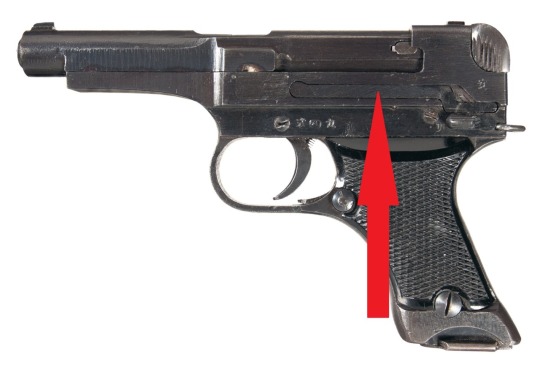
This mean’t that if any pressure was exerted on the sear, such as being bumped while in a holster, it would accidentally go off. I’m not talking about a rare one in a million happening where a pistol has to be dropped in a certain very specific way for it to accidentally discharge. In the following video, the fine folks of TFB TV demonstrate how absurdly easy it is to accidentally discharge the Type 94.
youtube
Considering that most of the serviceman issued this pistol were airplane or tank crews, this problem could be especially dangerous as in close quarters such as a cockpit or tank cabin, it would be very easy to bump a holstered Type 94 against something and have it accidentally go off. The inside of a tank is essentially a heavily armored box, so an accidental discharge could lead to a bullet ricocheting throughout the tank. The havoc that the Type 94 could reap upon its own users is astounding, especially for tank crewman as Japanese tanks tended to be very small vehicles with cramped interiors.
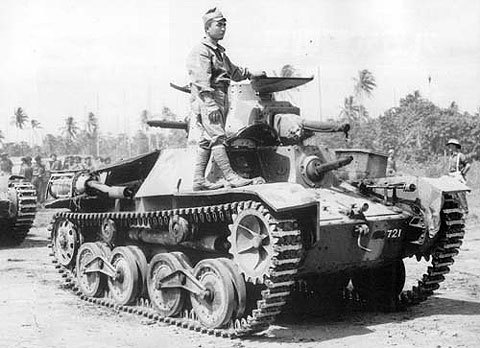
The Type 94 was adopted in 1935 and continued in production until the end of World War II in 1945. Around 71,000 were manufactured. The issue of the exposed sear was never fixed or modified.
471 notes
·
View notes
Photo
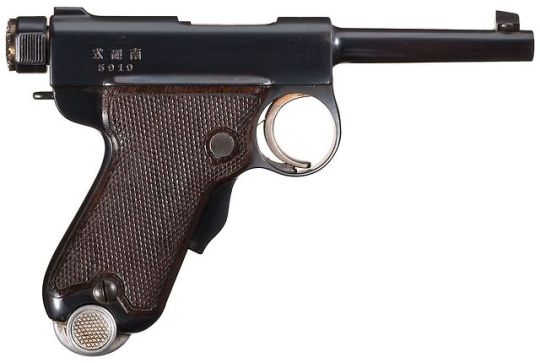
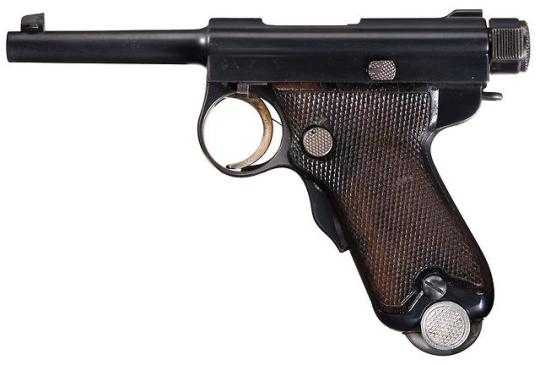
The Japanese Nambu Part II --- The Type B “Baby” Nambu
In case you missed: Part I
With the poor popularity of the Type A Nambu pistol, Kijiro Nambu decided that perhaps a pocket model would be more attractive to Japanese officers. Called the Type B “Baby” Nambu, it was identical to the Type A Papa Nambu except shrunken to 3/4 size. Whereas the Type A was chambered for the 8x22mm Nambu cartridge, in order to make the Type B smaller, it was rechambered for a 7x20mm cartridge which has similar ballistics and power to the .32ACP.
Like the Type A, the Type B was also unpopular, not because of it’s features, but because of its cost. As I mentioned in the previous post, Japanese officers were required to purchase their own sidearms. A newly commissioned Second Lieutenant in the Imperial Japanese Army earned a monthly salary of 70 yen, the sale price of the Type B was 80 yen. At the time there were many fine foreign imports available that were half the price of Nambu’s pistols, so most Japanese officers chose to purchase them instead. Around 5,700 Type B pistol were produced before production ended in 1927.
314 notes
·
View notes
Photo
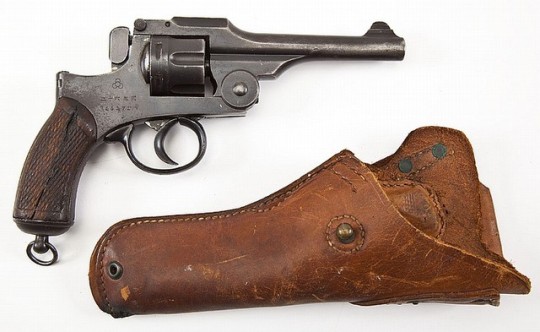

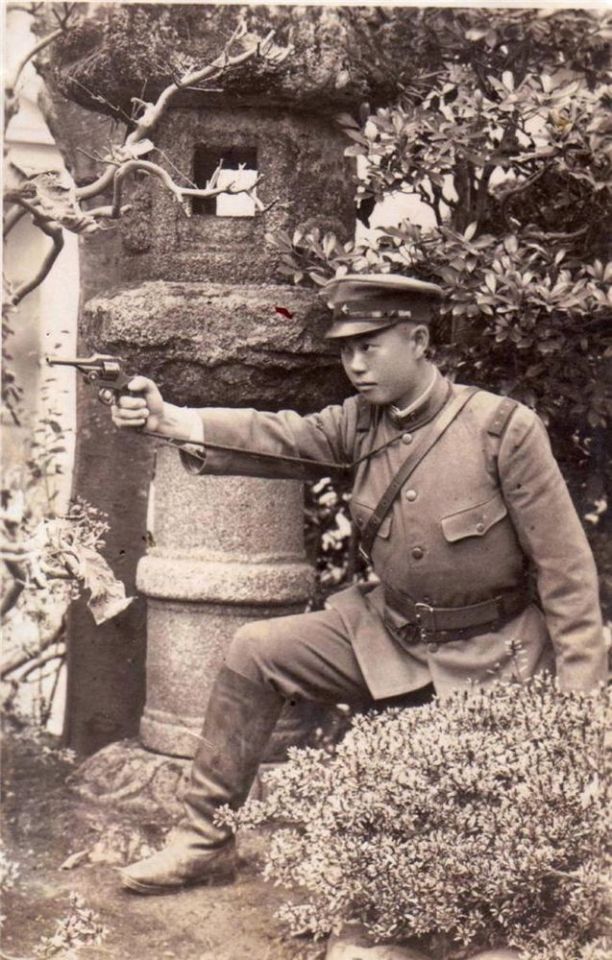
The Japanese Type 26 revolver,
The the 1890′s Japan had produced an indigenous rifle called the Murata for it’s new modern army. However, the Japanese military was still lacking a proper sidearm, mostly making due with a wide variety of foreign imports. In 1893 Koishikawa Arsenal developed the Type 26 double action revolver, named because it was adopted in the 26th year of Emperor Meiji’s reign. The Type 26 was a break open design similar to the Webley, with an auto ejector which ejected spent cartridge casings upon opening. It fired a 9x22mm rimmed cartridge which was similar in performance to the .38 S&W, which was a bit anemic and underpowered compared to other revolvers. It was double action only, however the Type 26 did have an exposed hammer which could not be cocked, and thus lacked a hammer spur.
The Type 26 was a simple and effective revolver but had one major flaw; the cylinder spun freely until the trigger was pulled. This meant that a Japanese soldier could fire the pistol a few times, and in the midst of combat the cylinder could rotate and rest on an empty chamber. At first the Type 26 fired black powder cartridges, but was easily converted to smokeless powder.
The Type 26 became the official sidearm of the Japanese Army and saw action during the First Sino Japanese War, Boxer Rebellion, Russo Japanese War, and World War I. In 1906 famed Japanese gun designer Kijiro Nambu invented the Nambu semi automatic pistol, which slowly began to replaced the Type 26. In 1926 the Type 14 Nambu was officially adopted by the Japanese military and issued to NCO’s and made available to officers. Despite the adoption of the Nambu, the Type 26 continued in production until 1935, being issued alongside the Nambu throughout the Second Sino Japanese War until the end of World War II. Around 60,000 were produced.
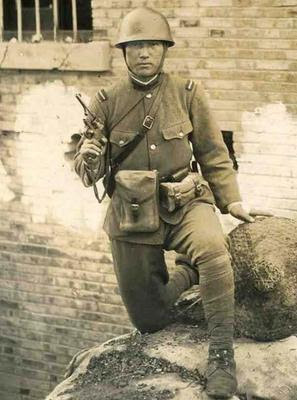
#guns#firearms#pistols#revolvers#history#antiques#world war i#wwi#world war ii#wwii#japanese history
506 notes
·
View notes
Photo
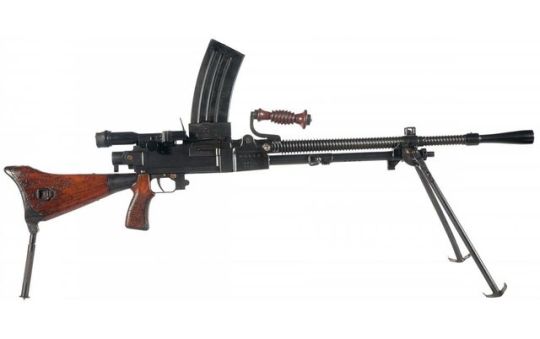
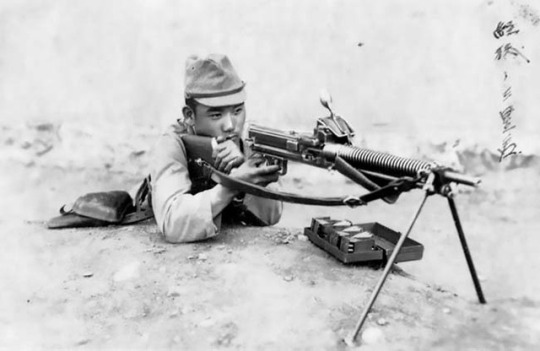
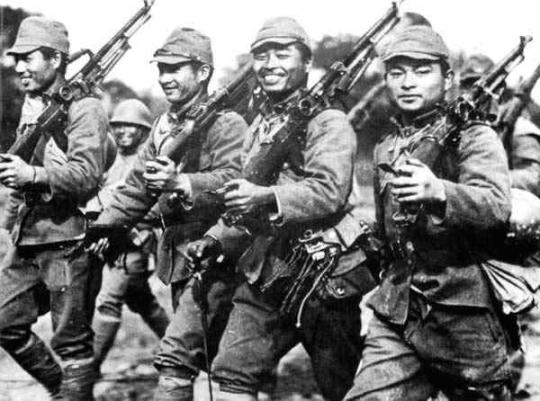
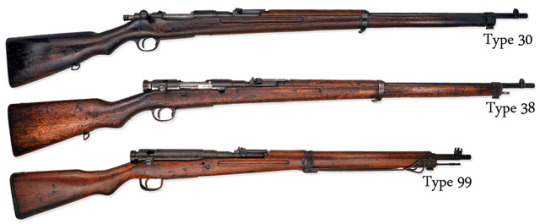
How the Japanese named their small arms,
In 1899 the Japanese adopted the Type 30 bolt action rifle. The rifle had many flaws, so it was redesigned by Kijiro Nambu, and the new Model, called the Type 38 was adopted in 1905. In 1939 the Japanese adopted a new and improved bolt action rifle in a new caliber, it was called the Type 99. In 1942 they developed a shortened paratrooper version of the Type 99, it was called the Type 2. Umm…wuht????
One popular Japanese light machine gun in the 1920′s was the Type 11 Light Machine gun, adopted in 1922. The weapon was found to be severely problematic, so it was replaced by the Type 96… in 1936. Huh???
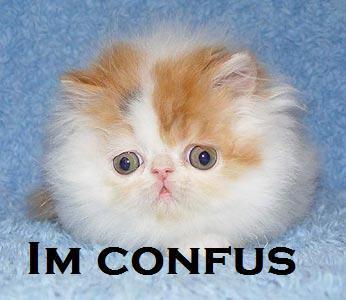
At first glance the way the Japanese number their small arms models seems not to make any rational sense at all. Typically weapons are named based on succeeding models, like the Lee Enfield Mark I, Mark II, Mark III etc, or model numbers are by date, like the Model 1911 pistol adopted in 1911, the Model 1917 revolver adopted in 1917, the 1903 Springfield adopted in 1903.
While Japan’s modeling system may seem nonsensical at first glance, there actually is a very interesting method to their madness. Originally models names were determined by the reigning year of the Japanese Emperor. For example, the Japanese Type 38 bolt action rifle was adopted in 1905, which was the 38th year of Emperor Meiji’s reign. The Type 11 light machine gun was adopted in 1922, then the 11th year of Emperor Taisho’s reign.
In 1927 the Imperial Army chose to switch to a system using the Japanese calendar. The Type 99 bolt action rifle and Type 99 machine gun were both adopted in 1939, which was the year 2599 according to the Japanese calendar. Hence, the model was named after the last two digits in the year 2599. In 1942, a paratrooper version of the Type 99 was created called the Type 2. On the Japanese calendar that was the year 2602. The Japanese chose not to count zero as a digit, thus the model was the Type 2 Paratrooper rifle, not the Type 02 Paratrooper rifle.
302 notes
·
View notes
Photo
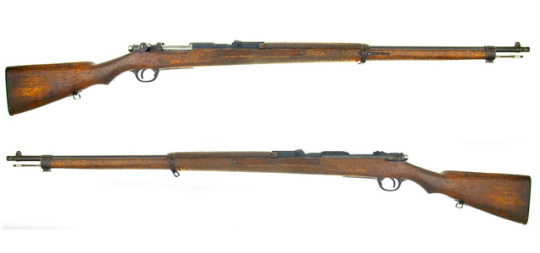



Japanese rifles in service of the Russian Army during World War I,
While Russia is famous for the Mosin Nagant bolt action rifle, during World War I domestic production of weaponry could not always keep up with the Russian Army’s insatiable demand for arms. Thus, during the war Russia purchased a number of foreign weapons. One usual seller was Japan, who a decade before was an enemy of Russia, dealing a hard blow during the Russo Japanese war. Despite old animosities, Russia’s need for rifles was great, and Japan was more than willing to sell.
During World War I two models of Japanese rifles were imported, the Type 30 (top pic) and the Type 38 (second from top). The Type 30 was the first smokeless powder bolt action repeating rifle and was invented by Col. Arisaka Nariakira in 1897 and chambered in 6.5 Arisaka (6.5x50mm). The Type 30 had some reliability issues, including case ruptures due to poor headspacing, jamming, misfires, difficulty in case extraction due to faulty extractor mechanisms, and an issue with the action in which hot gasses would blow in the face of the user. The Japanese quickly ditched the Type 30, placing most in storage. Since Russia was desperate for arms they were willing to overlook the problems of the Type 30, and the Japanese were certainly willing to sell in order to liquidate their old stocks of obsolete rifles. During the war Russia purchased 300,000 Type 30 rifles. It’s interesting to note that the Type 30 was the rifle primarily fielded by the Japanese Army against the Russian Army during the Russo Japanese War.
The Type 38 was adopted by Japan in 1906 as a replacement for the flawed Type 30, it was also chambered in 6.5 Arisaka. Essentially the Type 38 was a redesign of the Type 30 conducted by the famous Japanese gun designer Kijiro Nambu. It was an accurate, reliable, and extremely rugged rifle that served the Japanese military clear up to the end of World War II. The Russians were also interested in the Type 38, and thus another 300,000 Type 38 rifles and carbines were sold to the Russian Army.
The purpose of these rifles was not really for frontline combat, but to be used as a secondary arm for reserves and troops stationed on the rear, thus freeing up Mosin Nagant rifles for the front line. Regardless a number of Japanese rifles did see combat during the war. One example was the famous Czech Legion, which was armed with the Type 30 during the Russian Civil War. Many thousands of these rifles would become property of new nations that broke away from Russia with the collapse of the Russian Empire, for example Finland inherited tens of thousands, as did Poland, and Estonia was in possession of 24,000 Type 38 rifles which were converted to .303 British
187 notes
·
View notes
Photo
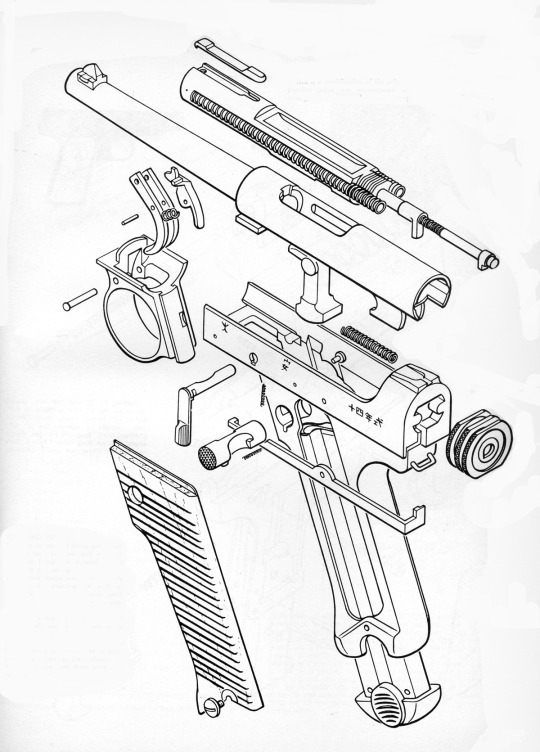
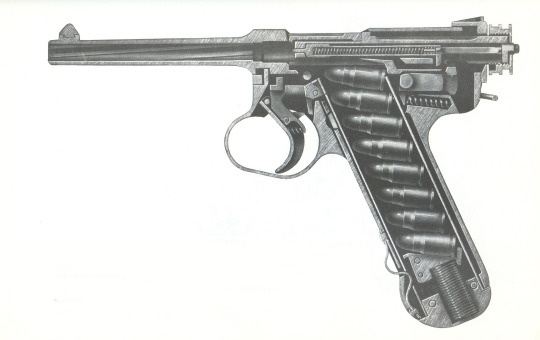
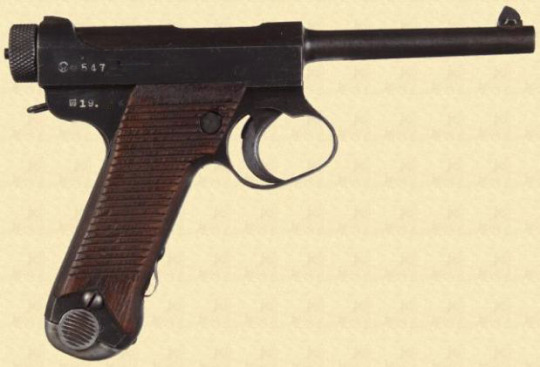
Cutaway of the Day: Nambu Type 14
The Type 14 Nambu was introduced in 1925 as an improved version of the earlier Nambu Type A which had been adopted in 1915. The improved Type 14, or as it was officially referred to; the '14 Nen Shiki Kenju', was introduced in 1925-6. Kijiro Nambu's earlier design was simplified internally and the grip-safety located at the front of the grip was removed in favour of a manual safety catch which could not be 'thumbed' safe but required the user's free hand.
Nambu's first semi-automatic pistol the Type A had replaced the aging Type 26 Revolver in 1915. However, a number of problems had been identified with the design including its internal complexity. Therefore some simplification of the internal parts was made and the grip profile of the Type 14 was altered making it significantly thinner. However, the Type 14 still retained the problematic striker spring which often did not strike cartridges hard enough causing misfires. Another fundamental issue with the Type 14 was the low pressure 8x22mm Nambu cartridge it was chambered which in comparison to it's contemporaries was grossly underwhelming in both power and weight of projectile.
Type 14 Nambu with the enlarged trigger guard, introduced post 1938
Initially intended as a personal weapon for NCOs the Type 14 soon entered mass production with some 200,000 being produced during World War Two. A number of alterations were made during its production run including the introduction of a larger trigger guard, introduced in 1937 - after experience gained in Manchuria showed it was impractical for use with gloves. An improved cocking knob was introduced in the early 1940s and a magazine retaining spring was also added in 1940. The quality of the Type 14, as with all Japanese small arms, declined during the war as the US systematically destroyed Japan's manufacturing infrastructure from the air. As such late war models have simplified cocking knobs, plain un-grooved grips, rough tool marks and unpolished finishes. In 1937, the Type 14 and the earlier Nambus were augmented by the terrible Nambu Type 94 which proved to be a dangerous, poorly made and designed weapon. The Nambu Also served as inspiration for Ruger's .22 Standard pistol.
Images One - Three Source
Image Four Source
Military Small Arms of the 20th Century, I. Hogg, (1985)
#Cutaway of the Day#Nambu Type 14#Nambu#Kijiro Nambu#Baby Nambu#Type 26#Japanese Type 14#Type A Nambu#pistol#firearms#gun#firearms design#History#Military History#Imperial Japanese Army#firearms development#cutaway#diagram#WWII#Nambu Type 94
97 notes
·
View notes